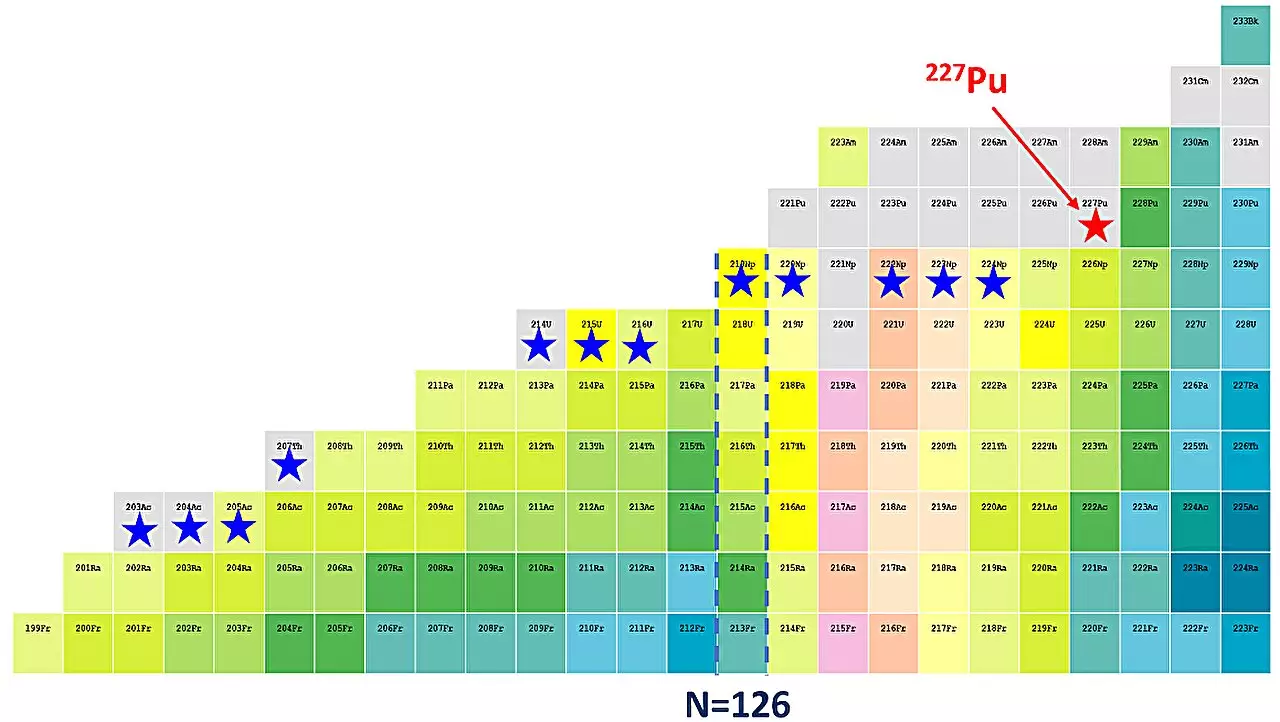In a remarkable advancement in nuclear physics, a team of scientists from the Institute of Modern Physics (IMP) of the Chinese Academy of Sciences has succeeded in synthesizing a novel isotope, plutonium-227. This significant achievement is documented in a recent publication in *Physical Review C* and reflects ongoing research into the intricate behaviors of atomic nuclei, specifically how they relate to neutron and proton shell closures.
Understanding nuclear structure hinges on the concept of magic numbers—specific quantities of protons and neutrons that lead to enhanced stability. For protons and neutrons, these magic numbers have been established as 2, 8, 20, 28, 50, 82, and 126. As researchers delve deeper beyond uranium into the transuranium elements, they have noted a diminishing robustness of these magic numbers, particularly the neutron shell closure at 126. This declining stability calls for comprehensive studies of isotopes in the plutonium series to discern whether similar shell behaviors and closures persist throughout.
The synthesis of plutonium-227 involved sophisticated experimental techniques conducted in the gas-filled recoil separator of the Heavy Ion Research Facility in Lanzhou, China. Utilizing fusion evaporation reactions, the research team successfully produced this neutron-deficient isotope for the very first time. This accomplishment not only marks the 39th new isotope identified by the IMP but also stands as a historical milestone as it is the first plutonium isotope discovered by Chinese scientists.
Upon observing the decay sequences affiliated with plutonium-227, important characteristics were measured, including an alpha-particle energy emission of approximately 8191 keV and a half-life of about 0.78 seconds. These values align with existing knowledge of plutonium isotopic systems, suggesting that the properties of plutonium-227 can be integrated into the broader context of nuclear physics research. Essentially, the findings help build a more comprehensive understanding of how isotopes behave in relation to their neutron and proton configurations.
As the IMP research team celebrates this remarkable discovery, they remain committed to unlocking further mysteries within the plutonium isotope family. Plans are underway to investigate other isotopes, particularly those ranging from plutonium-221 to plutonium-226, in order to refine knowledge surrounding shell closures. Dr. Yang Huabin, the lead author of the study, underscores the importance of these ongoing investigations to elucidate the resilience and dynamics of shell closure phenomena in heavier elements.
The discovery of plutonium-227 serves as a pivotal moment in nuclear science, not merely for its novelty but for the critical questions it raises about nuclear stability and structure. As empirical data in this field remain sparse, continuing research endeavors will be vital in unraveling the complexities underlying atomic behavior, thereby enriching the scientific community’s understanding of the fundamental principles governing matter at the nuclear level.


Leave a Reply